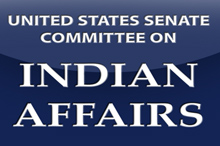Child care facilities close across Green Country over tribal money dispute | KTULPlease ensure Javascript is enabled for purposes ofwebsite accessibility-1; } // command = ‘getUSPData’, version = 1, callback = function(uspData: uspdata, success: boolean) window.__uspapi = function (command, version, callback) { if (command === ‘getUSPData’ && version === 1) { if (isFullMeasure() || getPrivacyKVP()) { // enable via KVP or if the site is fullmeasure.news // check trustarc for privacy info var uspString = getTrustArc(); if (uspString) { // if the uspString was created and returned properly // Then perform callback with correct object var uspData = { version: version, uspString: uspString }; return callback(uspData, true); } } } // Case where command !== getUSPData || uspString returns null || version !== 1 || !usPrivacyEnabled // call callback with uspData = null and success = false return callback(null, false); } function getTrustArc() { if (window.truste && window.truste.cma) { // if the trustarc object and methods are available var url = location.protocol + ‘//’ + location.host; // Get consent decision by calling trustarc api var consentDetails = window.truste.cma.callApi(“getConsentDecision”, url); /* returns consentDetails: {consentDecision:$integer, source:”asserted”} consentDetails.source can be “asserted” or “implied” – ignore for our purposes consentDetails.consentDecision can be 0, 1, 2, or 3 0 – no decision (closing banner without making a decision) 1 – required – “opted out” 3 – advertising – accepted */ var uspPrivacyString = formatUSPrivacyString(consentDetails.consentDecision); return writeUSPrivacyString(uspPrivacyString); } else { return null; } } // Handle getting the value of the notice_behavior cookie (provided for us by trustarc) function getCookieData(name) { var value = ‘; ‘ + document.cookie; var parts = value.split(‘; ‘ + name + ‘=’); if (parts.length === 2) { return parts.pop().split(‘;’).shift(); } return null; } function…
Continue reading







 Román Zaragoza as Sasappis in ‘Ghosts’ | CBS via Getty Images
Román Zaragoza as Sasappis in ‘Ghosts’ | CBS via Getty Images 




